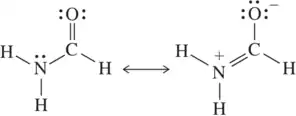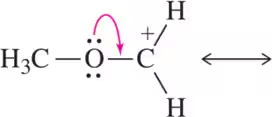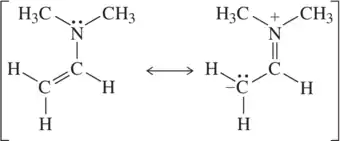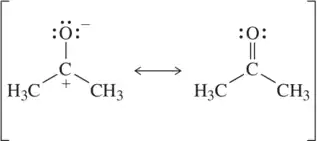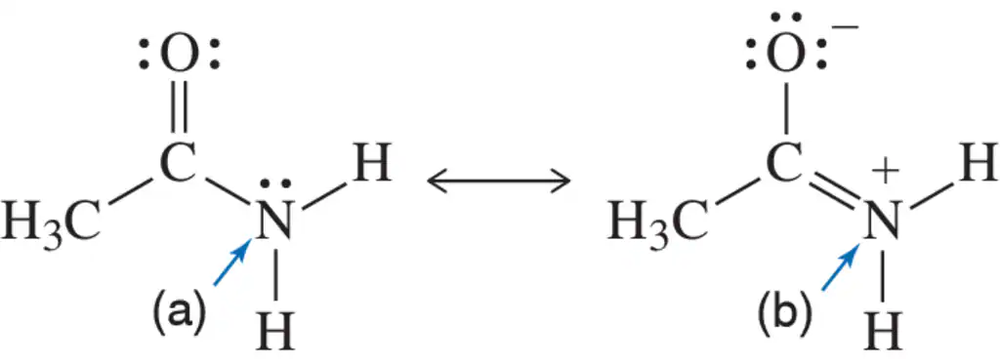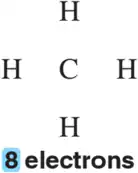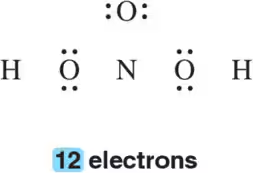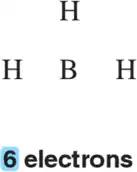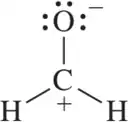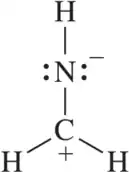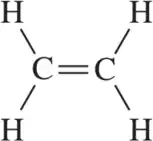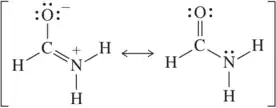 Back
BackProblem 47b
Each pair of structures represents two valid resonance structures. Use the arrow-pushing formalism to justify the formation of the one on the left from the one on the right.
(b)
Problem 48a
Draw the resonance structure that would result from the indicated movement of electrons.
(a)
Problem 49a
For each of the molecules shown, do the following:
(i) Identify all pushable pairs.
(ii) Identify all places where electrons can be pushed.
(iii) Draw one valid resonance structure.
(a)
Problem 50
i) Which of the following resonance structures represents the 'actual' structure of the molecule shown? (ii) Which contributes more to the resonance hybrid? (iii) Why?
(a)
(b)
(c)
Problem 51
To which atom of formaldehyde would you expect H+ to add?
Problem 52
Which atoms in the enol ether would you expect to react with Br⁺ ?
Problem 53
Assign the hybridization of the nitrogen in each resonance structure of acetamide.
Problem 55c
How many valence electrons does each of the following contribute to a Lewis structure?
(c) B
Problem 55g
How many valence electrons does each of the following contribute to a Lewis structure?
(g) S
Problem 55i
How many valence electrons does each of the following contribute to a Lewis structure?
(i) Cl
Problem 55j
How many valence electrons does each of the following contribute to a Lewis structure?
(j) Al
Problem 55l
How many valence electrons does each of the following contribute to a Lewis structure?
(l) ―1 charge
Problem 58b
Show how the Lewis dot structure for each of the following atoms would overlap to form a single bond.
(b) C and O
Problem 59b
Which atom in each pair would you expect to be the central atom in a Lewis structure?
(b) C vs. O
Problem 59d
Which atom in each pair would you expect to be the central atom in a Lewis structure?
(d) C vs. N
Problem 59f
Which atom in each pair would you expect to be the central atom in a Lewis structure?
(f) C vs. F
Problem 60a
Given the atoms involved and the number of valence electrons remaining, complete the Lewis structure by placing bonds between atoms such that each has a full octet.
(a)
Problem 60d
Given the atoms involved and the number of valence electrons remaining, complete the Lewis structure by placing bonds between atoms such that each has a full octet.
(d)
Problem 60e
Given the atoms involved and the number of valence electrons remaining, complete the Lewis structure by placing bonds between atoms such that each has a full octet.
(e)
Problem 61a
By moving an electron pair, draw a better Lewis structure that minimizes formal charges.
(a)
Problem 61b
By moving an electron pair, draw a better Lewis structure that minimizes formal charges.
(b)
Problem 62j
Draw the Lewis structure for the following molecular formulas.
(j) H2SO4
Problem 62l
Draw the Lewis structure for the following molecular formulas.
(l) SO42-
Problem 62u
Draw the Lewis structure for the following molecular formulas.
(u) NH4+
Problem 62v
Draw the Lewis structure for the following molecular formulas.
(v) CH5N
Problem 63a
In the following molecules, identify all pushable electron pairs.
(a)
Problem 64b
Two resonance structures are shown for each molecule. Use the arrow-pushing formalism to represent the electron flow from the structure on the left to the one on the right.
(b)
Problem 64d
Two resonance structures are shown for each molecule. Use the arrow-pushing formalism to represent the electron flow from the structure on the left to the one on the right.
(d)
Problem 64e
Two resonance structures are shown for each molecule. Use the arrow-pushing formalism to represent the electron flow from the structure on the left to the one on the right.
(e)
Problem 64f
Two resonance structures are shown for each molecule. Use the arrow-pushing formalism to represent the electron flow from the structure on the left to the one on the right.
(f)

